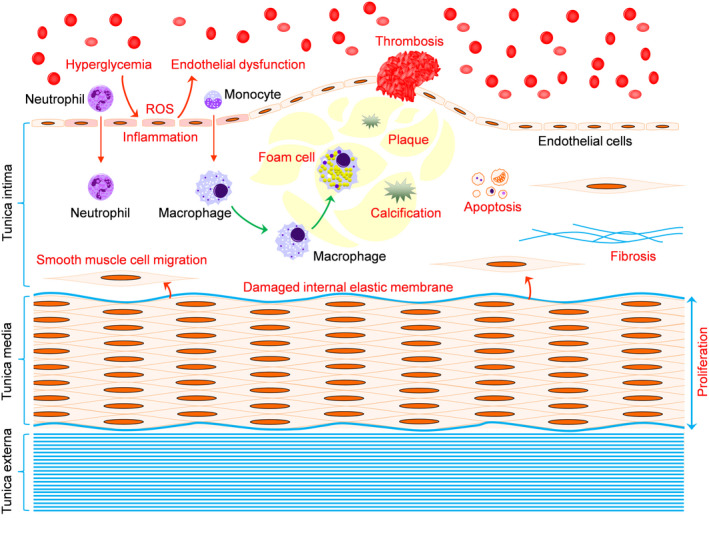FIGURE 1.

Pathophysiology of macrovascular complications of diabetes (MCD). Hyperglycaemia causes formation of reactive oxygen species (ROS) and inflammation in the endothelium, leading to endothelial dysfunction as a critical first step towards MCD. Under diabetic condition, the permeability of the inflamed endothelium is increased, allowing recruitment of neutrophils and monocytes into the tunica intima, where the macrophages—differentiated from monocytes—engulf lipids and become foam cells that gradually form a plaque. Calcium can be deposited in the plaque. Thrombus forms at the location where the plaque breaks. Apoptosis is induced, and fibrosis is accumulated. Smooth muscle cells proliferate, thereby thickening the tunica media. Smooth muscle cells can migrate into tunica intima through damaged internal elastic membrane, contributing to atherogenesis. Red characters, detrimental processes resulting in atherosclerosis
